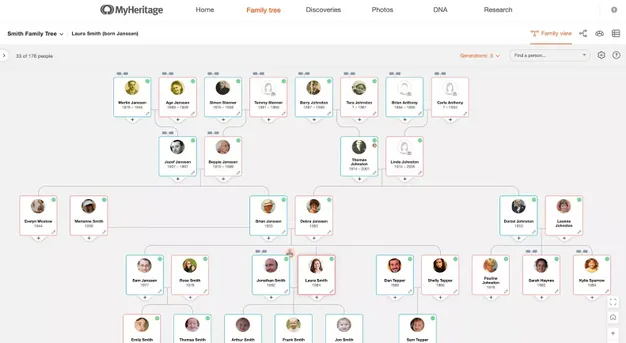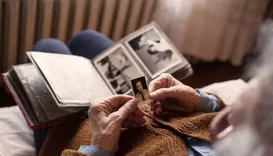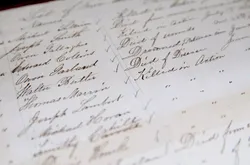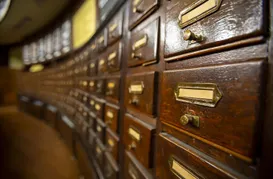
Genealogy research is a search for ancestors using a methodology incorporating historical documents, oral history, photographs, family stories, and more. Through evidence evaluation and documentation of sources, the goal of a genealogist is to learn more about an ancestor, including not just important life events, but also how they lived.
Genealogy research can help you learn names, dates, and other facts about an ancestor. More importantly, research can provide insights into what life was like for that person or family. How did they survive hardships? How did they celebrate successes? What values were important to them? And you might just be able to see family “traits and traditions” in your own family.
Research your ancestors on MyHeritage
How to start building your family treeHow to start building your family tree

Thanks to technology, we no longer have to “draw” family trees and fill in the information by hand. Websites like MyHeritage and software like Family Tree Builder provide an easy and fun way to build a family tree and to share it with family and friends.
In addition, an online family tree is easy to keep up to date when you locate new information through historical records only or by information provided by interviewing family members.
You can also “invite” others to contribute to your online family tree and collaborate with family members to gather information, family photos, family stories and other items that provide a glimpse into the lives of your ancestors.
See also:
What information should I include in my family tree?What information should I include in my family tree?

There are “basic” facts which should be entered for each person if available. Your goal is to “document” that ancestor with facts such as date of birth, marriage location, etc. Here’s a basic list:
- Name, including given name (first name), middle name or initial, and surname (last name)
- Birth date and birth location
- Marriage date and location
- Death date and death location
Then expand the list of facts with these options which will create a new person on the family tree:
- Name of spouse
- Name(s) of children
- Names of parents
- Names of siblings
Once the new people are added to the tree, repeat with the basics: name, birth date and location, marriage date and location, etc.
Where can I find information about family members for my family tree?Where can I find information about family members for my family tree?

Start with interviewing your family members, especially older ones such as grandparents. Always ask if they are comfortable answering your interview questions and let them know how you intend to use the information.
If possible, document the interview by taking notes or by recording the interview using audio and/or video. Again, securing permission is important. While you don’t need a written form of consent, for your own notes, write down the date and time of the interview, the person being interviewed, and the location.
Avoid very specific questions; you want to keep questions “open-ended” and allow them to tell you what they remember about an ancestor or a specific event. At the same time, your goal is to collect “clues” so that you can perform follow-up research and find historical documents to back up the interview information.
Here are some questions you should consider:
- Where and when were you born?
- What is your first memory?
- Who were your parents? Your grandparents?
- When and where were your parents born, married, and died? What about the same information for your grandparents?
- When and where did you get married? Who did you marry?
- How many children did you have? What are their names? When and where were they born?
- What was your first job? What was your favorite and your worst job?
You can find an extensive list of suggested interview questions in the downloadable resources available on the MyHeritage Knowledge Base.
Remember to let the person being interviewed tell “stories” and what they remember. These stories can be filled with clues for future research.
Finally, as a courtesy, type up your notes from the interview and send a copy to the person you interviewed. Ask them if they would like to have access to your online family tree and send them an invite to collaborate.
See also:

While historical records traditionally have been located by visiting libraries, archives, and governmental offices, more and more researchers use online sites like MyHeritage to search for records related to their family members.
Use the basic search form and start with what you know based on your interviews with family members and other information you have gathered. Some important considerations when searching:
- Enter a person’s name, birth year and location, etc. Check the “exact” box for each field and then click Search. Review the list of records located.
- If relying on family stories and what one of your family members remembered as part of their interview, be flexible in your search. Uncheck the “exact” box and enter a range of dates. Also, instead of entering a specific city or state/province, enter the country in the location field.
- Once you click on a record in the list and it is related to a family member, look to the sidebar for “related” records that can provide more information.
Repeat this process and continue locating records online. While the search can be fun and even addictive, remember the goal is to extract the best information possible about an ancestor to add to your family tree. That is why following a research process is important.
Genealogy Research ProcessGenealogy Research Process

Tracing your roots can be an exciting journey of learning about your family history and ultimately about yourself. Often that excitement can quickly turn into frustration when you can’t locate the historical records you need or you don’t know the next step in the research process.
The most successful genealogy research comes from following a process that locates the information you need and still allowing you to enjoy “the hunt.” Here’s what that process looks like:
- Set research goals. Be specific, don’t just write down “I want to know more about Grandma.” Try “I want to find my grandmother’s birth date and location.” This is a goal that can be reasonably accomplished for most of us with the historical record collection at MyHeritage. You might even want to refine the goal statement to “Locate the birth date and location for Anna Henneberg, my maternal grandmother.” Over time you’ll learn to be more concise, to only include what’s needed and to adopt a format that helps you differentiate goals for different ancestors: “HENNEBERG Anna - Birth date and location.”
- Have a plan. It is easy to get distracted once you start working on that new research goal. At some point you’ll find information for your maternal grandfather while researching your maternal grandmother. So what should you do? Put your original goal aside and chase after Grandpa? This is where a research plan comes in. A genealogy research plan can help keep you focused and organized. Think of it as one big “to do list” for family history research. It doesn’t matter what you use to scope out the plan, but it just can’t all be up in your head. It has to be either written in a notebook, tracked in a spreadsheet, or maintained as part of a family tree program like Family Tree Builder. Simply “list” several research goals and also add information like Start Date, Name of Goal, Target Records, Information Located, and Complete Date. In our example for Anna Henneberg it would be:
| Goal | Target resources | Start
Date |
End
Date |
Information located |
| Prove birth date of Anna Henneberg. | Birth certificate, vital records, birth announcement |
- Track your work. Sure, it can be fun to find information and enter it on your family tree and then go on to the next “find.” But what if that info is not correct? What if you find conflicting information? This is why many genealogists “track” their finds, usually in a research log. This can take many forms: again, a simple notebook, a spreadsheet, or some genealogy websites have a way to save and track what you find in their historical records.
- Save your finds. Have you encountered this scenario: you find an amazing historical record or photograph and then the next morning or next week when you return to the site, you can’t find it? One of the first actions to take when locating valuable information is to SAVE IT! Again, there are various methods: save the photo or record image to your computer OR attach it to the relevant person on your family tree.
- Also important… save the link to the record! It can be as simple as pasting it into an email to yourself, or adding it to the Notes section for someone on your tree. This way, you’ll always have a way to get back to that record!
- Evaluate what you find. An easy mistake to make is treating all records equally. In actuality, some records are “better” than others in that they offer better “proof” of a fact, such as a marriage date or a death location of an ancestor. See “Evaluating What You Find” for details on the evaluation process and how to determine whether or not you have the best record to prove a fact.
See alsoSee also
- What is GEDCOM and how to use it
- What to do if you find broken connections in your family tree
- How to access free genealogical resources
- How to research female ancestors
- How to research male ancestors
- How to research an ancestor's business and occupation
- Five genealogy apps that can assist your research
- Exploring LGBT family history
- How to incorporate family research done by others into your own
- How to track street grid changes in genealogical research
- How to use Internet Archive for Genealogy Research
- How to use the International Classification of Diseases (ICD) for genealogy research
- Family group sheet
Explore more about genealogy researchExplore more about genealogy research
- Start building your family tree on MyHeritage.com
- How to Research Your Ethnicity with Genealogy on the MyHeritage Genealogy Hub
- Introduction to Genealogy Course, free online course for beginners on the MyHeritage Knowledge Base
- Genealogy Research for Beginners: How to Get Started, article by Daniella Levy on the MyHeritage Knowledge Base
- Genealogy for Beginners: Start Your Online Family Tree, webinar by Daniel Horowitz on the MyHeritage Knowledge Base
- Genealogy Cheat Sheets by Thomas MacEntee at Genealogy Bargains Blog

